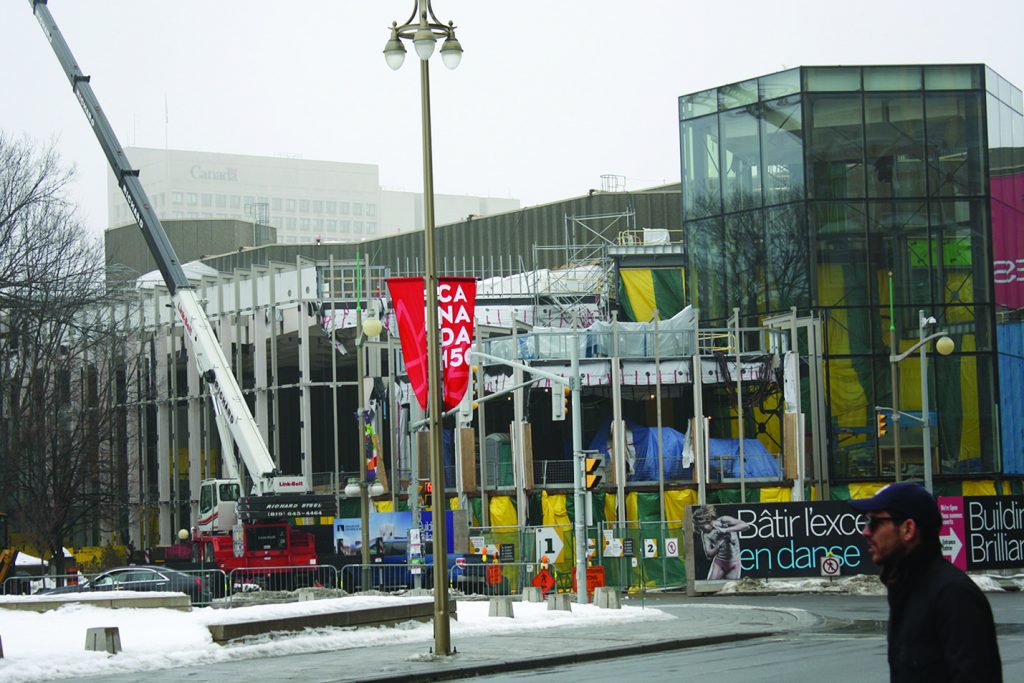National Arts Centre to reveal Nordic inspiration for new atrium
By Gabbi Van Looyen
The National Arts Centre will be revealing the Nordic inspiration behind its new Elgin Street atrium during the upcoming Ideas of North Festival.
A free series of talks will be held Oct. 12-Oct. 14 as part of the festival in front of the Susan Glass and Arni Thorsteinson Staircase in the atrium at 1 Elgin St.
Alexander Shelley, director of music at the NAC, said the planned lecture is part of the event’s vision to have conversations about Nordic identities and landscapes that transcend the boundaries of what is traditionally seen as fine art.
“(The architects) will be talking about how they approach their architecture in northern countries—how much glass is used, why they do that, what influence their environment has on aspects of architecture and whether there’s similarities between the countries,” he said.
The atrium, which opened on Canada Day, is part of the first phase of the NAC’s landmark $110-million renovation. The addition features a new $15.7-million glass façade and the Kipnes Lantern, a 20-metre tall digital display.
Donald Schmitt, the Toronto architect behind the addition, will be speaking at the lecture. He said the design aims to bring the Canadian landscape indoors.
“It’s drawing in the landscape,” Schmitt said in an interview. “At the NAC . . . and in other Nordic buildings we’ve been involved in, (it’s) using glass and transparency to really pull in the natural landscape and connect the interior and the exterior in a kind of strong way.”
Anne-Rachel Schiffmann, senior architect at Snøhetta, a Norwegian-based design firm, will also be a guest speaker.
She said that the “indigenous materiality” of Nordic architecture — referring to the use of natural materials over synthetics — can provide a link to the landscape in innovative ways.
“We find it particularly interesting to use indigenous building materials . . . and use modern technologies, such as robotics or 3D printing, to manipulate these woods or stones, making them look a bit from the past, almost like found objects that belong to the landscape,” she said in an email.
Schmitt said the openness and warmth of the atrium was a deliberate attempt to build a sense of community at the NAC, abandoning the building’s Brutalist roots that seemed to shut the world out behind imposing, thick walls of concrete.
The “bunker-like” building, which was erected to mark Canada’s Centennial in 1967, has been a source of controversy ever since.
“Back then, I think conceptually the National Arts Centre was built almost as this Canadian Shield, this massive amount of block. It’s now 50 years later and I think we are thinking about it in a much different way,” he said.
Shelley said he agrees that this architectural shift at the NAC is an important one and hopes the change will translate into more foot-traffic.
“We live in a different time where transparency — literal transparency — is greatly valued, despite all the spin in the world,” he said. “You’ll see people sitting in here chatting, listening, discovering, sharing — and hopefully, people from the street will be pulled into the building.”
Ideas of North is a celebration of Canada’s 150th year of Confederation and the 100th anniversary of Finland’s independence from Russia, following the Bolshevik Revolution in 1917. The wider festival will offer a variety of free and paid events that will explore Nordic landscapes and identities through music, culinary arts, architecture, dance and interactive exhibits. The festival begins Oct. 3 and runs until Oct. 14.

